Sequoia Capital bets on generative AI - Market Map, Apps, Horizons
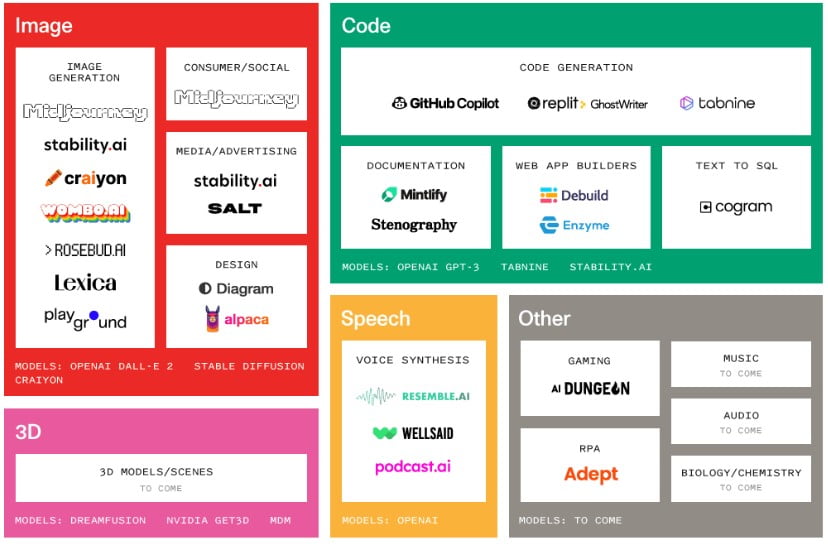
Key Points
- Renowned venture capital firm Sequoia Capital expects a paradigm shift triggered by generative AI.
- Generative AI systems are poised to become faster, cheaper and even better than humans in creative fields, the firm says. Every industry where humans create original work is affected by this development - from programming to art.
- By 2030, AI systems for text, images and code are expected to comprehensively complement or even replace human work.
- Fundamental to this belief is the recent rapid development of large-scale AI models, which Sequoia says will continue in a similar vein. Sequoia refers to this as "Large Model Moore's Law."
Update October 19, 2022:
Sequoia Capital has created an initial market map of generative AI companies and startups.
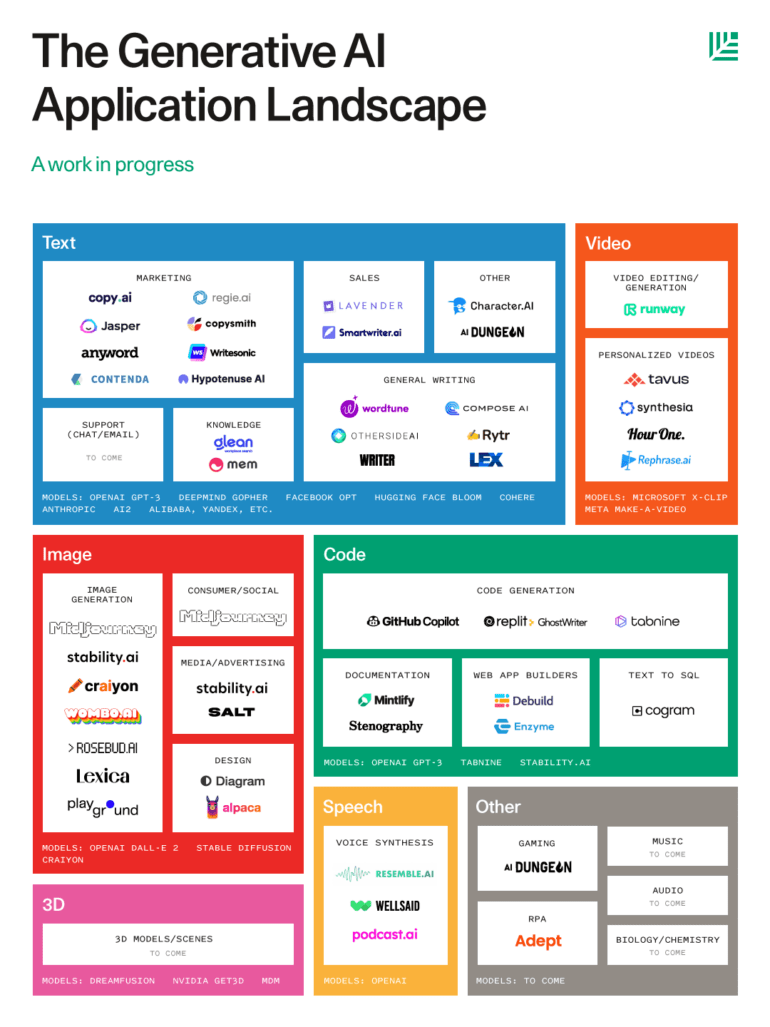
Original article from October 03, 2022:
GPT-3, DALL-E 2 and Co.: If influential venture capital firm Sequoia Capital has its way, then current generative AI systems are the vanguard for the next computing revolution.
Sequoia Capital is one of the best-known Silicon Valley venture capitalists. The firm's money is in Apple, YouTube, WhatsApp, Instagram, and Google, among others. Companies backed by Sequoia are said to cover around 20 percent of the US tech index Nasdaq.
Sequoia's next big bet: "Large Model Moore's Law."
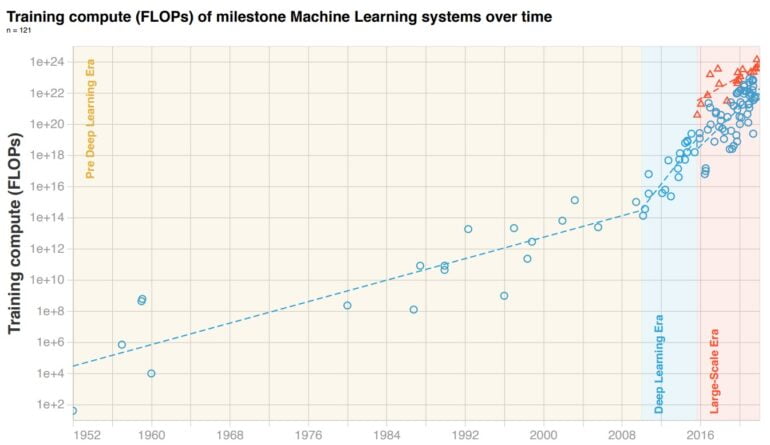
Generative AI is taking on more and more tasks
Generative AI systems are poised to become faster, cheaper, and even better than humans in creative fields as well, according to Sequoia. Every industry where humans create original work is affected by this development - from programming to art.
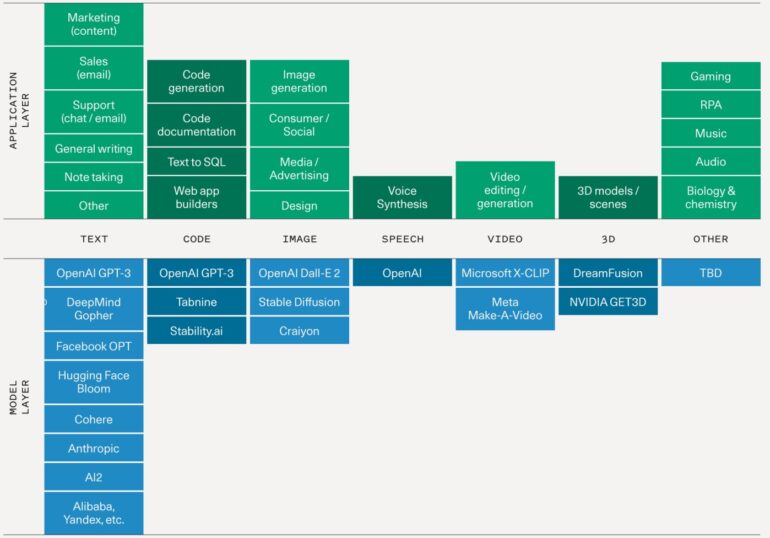
"Certain functions may be completely replaced by generative AI, while others are more likely to thrive from a tight iterative creative cycle between human and machine—but generative AI should unlock better, faster and cheaper creation across a wide range of end markets," the investment firm writes.
Billions of knowledge and creative workers could become more efficient or creative by "at least ten percent" through AI. The dream, according to Sequoia, is toward zero marginal costs for creativity, enormously high labor productivity, and thus new levels of market capitalization.
"Generative AI has the potential to generate trillions of dollars of economic value," Sequoia writes.
Large AI models are becoming more efficient
The recent progress of generative AI systems has been impressive, the firm says, and is due in particular to better models, more data and more computing power.
Sequoia expects this development to continue to accelerate in the coming years as computing power becomes cheaper, model architectures become more efficient, and the cost of AI training and inference continues to decline.
More and more developers would have access to large AI models on which to build their specialized, generative apps. The next step would be an "explosion of creativity" in apps that would eventually produce the first killer apps.
"For developers who had been starved of access to LLMs, the floodgates are now open for exploration and application development," Sequoia writes.
At the beginning of a platform shift
Sequoia compares the landscape of current generative AI systems to the introduction of the iPhone. The first iPhone apps offered an interesting glimpse into the future, but were also "somewhat gimmicky and thin, with unclear competitive differentiation and business models."
Potential hurdles to business models for generative AI include copyright issues, trust and security, and cost. These issues are far from addressed, according to Sequoia, and generative AI is still in its infancy.
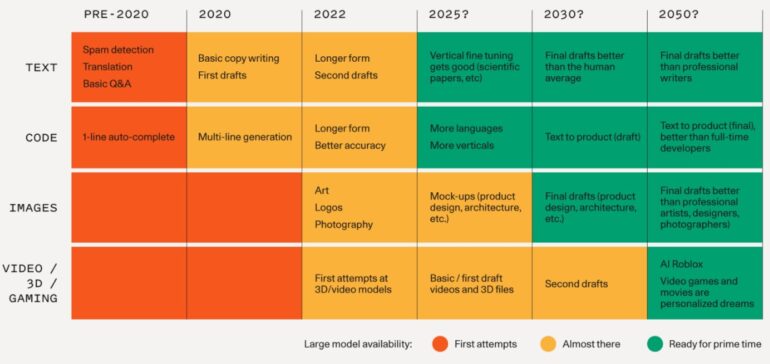
The pace of progress is "incredible high" and if development continues to follow "Large Model Moore's Law," even "far-fetched scenarios" like Pixar movies and games created from just lines of text "may just enter the realm of the possible."
As a result, Sequoia believes that the technology industry is at the beginning of a platform shift and is looking to expand its investments in generative AI.
Midjourney CEO David Holz also expects great progress in generative AI. In as little as two years, such systems should be able to output real-time content at 30 frames per second, he said. In ten years, video game consoles could dream up entire game worlds in real-time.
AI News Without the Hype – Curated by Humans
As a THE DECODER subscriber, you get ad-free reading, our weekly AI newsletter, the exclusive "AI Radar" Frontier Report 6× per year, access to comments, and our complete archive.
Subscribe now